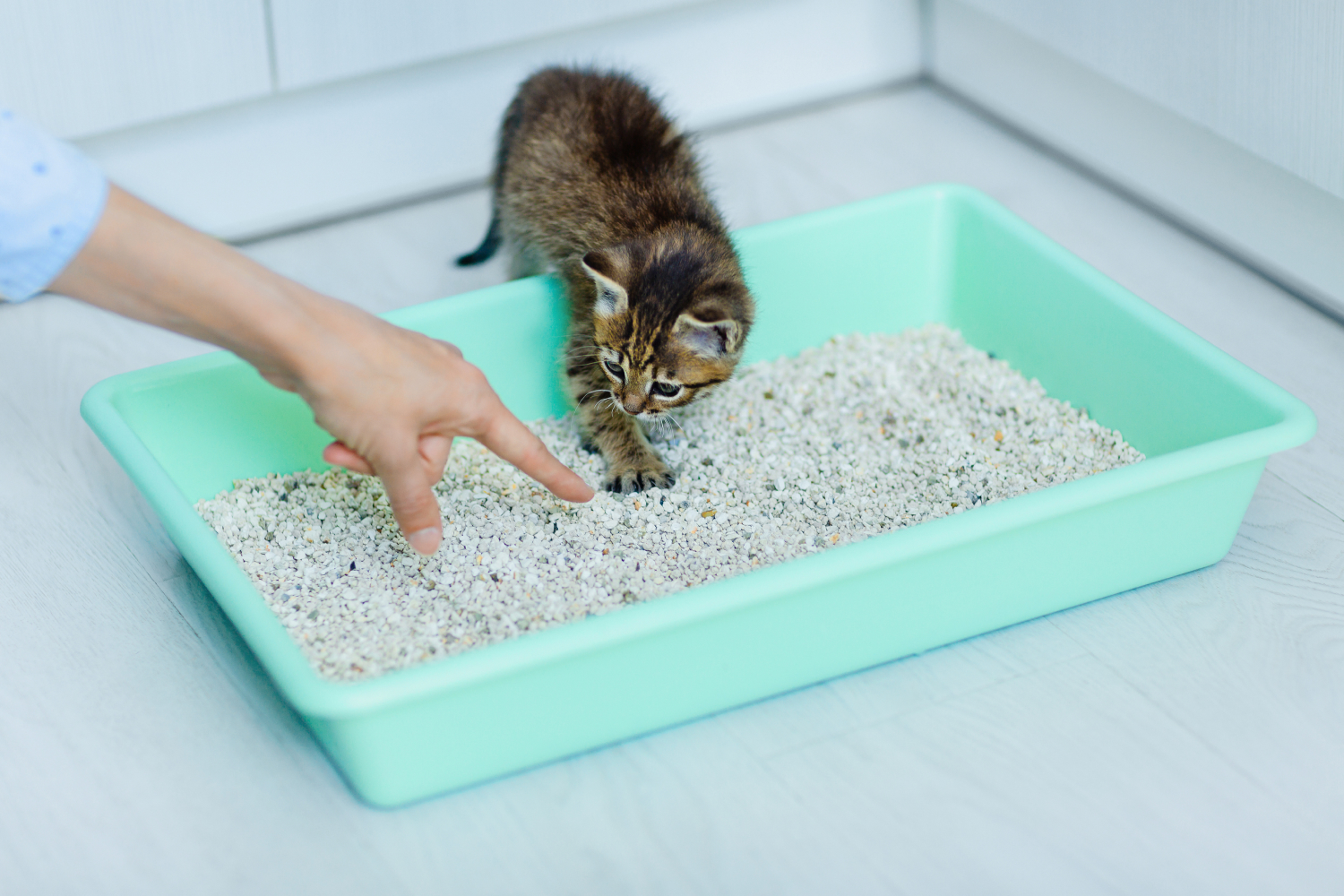Bringing home a new kitten isn’t quite as much work as bringing home a new puppy. Kittens tend to be more independent.
Cats are highly intelligent and motivated animals that pick up on what you’re trying to communicate with them. Because of this, training your new kitten on how to use a litter box tends to be fairly simple. If you commit to the training, your kitten should pick up on it in no time.
To learn a few tips and tricks on how to litter box train your kitten, keep reading:
When Should You Start?
For the first few weeks of a kitten’s life, their mother helps them to eliminate and cleans them up afterward, so a litter box is unnecessary. After a month or two, when they are with their new human, a litter box can be introduced. With adult cats adopted from the shelter, start litter box training immediately when they get home so they can figure out where it’s appropriate to use the bathroom. Luckily, many adult cats are pros at this already.
Litter training must be consistent on your end, but it will likely come naturally to your cat. You must keep it clean so that they continue to use it correctly. Additionally, you may have to try out a few different spots around the house, different cat litter, or use positive reinforcement to get your kitten to use it correctly, but it’s worth the trial and error!
5 Tips and Tricks When Litter Training
All cats are intelligent, but every cat is different and may need to be motivated to use the litter box. Some cats might struggle more than others or resist their litter box at first.
Cats famously love boxes, but how do we get them to love their litter box? Let’s get into potty training made easy.
1. Pick the Optimal Size
Before you even get your kitten, go shopping for supplies. Start with a litter box that suits the size of your new cat. For tiny kittens, a small litter box will work perfectly for them.
One of the most common litter box problems is that the litter tray is too deep or too large. Young kittens tend to do best with a 13×9-inch tray. Low sides are ideal since your newest furry friend might not be a top-notch jumper yet. If the kitten’s litter box is too difficult to get out of, felines might feel trapped and not want to use the box, leaving pet parents to deal with accidents around the house.
An older cat will require a larger litter box. As your cat grows, upgrade their litter box size so they fit comfortably in it.
2. Consider Litter Type
You will then have to pick out the best type of litter — this will depend on your cat’s preferences. Cats and kittens are notoriously picky in everything from cat food to litter type. When you bring your cat or kitten home, ask the rescue or breeder what type they previously used.
Using the right kind can help to avoid accidents.
- Clay litter: Clay litter is one of the easiest ones to find in your local pet store. The particular can be fine or dense. Clumping clay kitty litter is generally made from bentonite. While it’s heavier, it’s easier to clean but tends to be more expensive. Non-clumping clay litter is made from wood fibers or non-bentonite clay. It’s lighter and less expensive.
- Pine: This litter is made from lumber scraps. Opt for soft, harsh-chemical-free pine for your cat’s litter box.
- Other Natural Materials: Wheat, corn, and walnut shell options are available. Some Wheat is a naturally clumping litter and comes both scented and unscented. Grass and corn litter are also biodegradable (like wheat) and naturally clump.
Kitten-specific litters often have pheromones added to encourage them to use the box. You might also want to add a mat underneath the box to make the house training process a tad neater.
3. Think About the Location of the Box
Depending on the size of your home or space, you might only have a few good spots in mind for the litter box. Ideally, the litter box will go in a spot that’s quiet and out of the way but not too far from human interaction. A low-traffic area is best since cats won’t want to go to the bathroom there if they feel frightened or on edge.
A litter box shouldn’t be near your kitten’s food or water dishes or in rooms that are known to be pretty loud. If you have space in your bathroom, that’s always a solid option or a spare room that isn’t used as frequently as others.
If you have multiple floors in your house, place a litter box on each floor with the same supplies for all locations. If you have multiple cats (lucky you!), there should be at least one more litter box than the number of cats in the home.
4. Reward Them for Using the Litter Box
While litter box training often comes naturally, try rewarding your kitten’s good behavior with a little treat. When your kitten is done using the litter box and exits it, give them a treat or praise ASAP. You want to associate them using the bathroom with the reward, so it’s essential that you give it to them immediately.
On the other hand, if your kitten has an accident, don’t punish them. It won’t send the right message, and they’ll be more confused and startled than anything.
5. Clean It Regularly
Your cat relies on you to keep their litter box clean. If you aren’t on top of it, they might begin to use other spaces in your home to go to the bathroom.
Cats like a clean litter box, and can you blame them? Just like humans, they don’t want to use the bathroom somewhere that’s messy. For cats, their solution is to go elsewhere: This means more accidents that you have to not only clean up but find throughout your house.
Not using the litter box is sometimes a medical issue. While it might be that the litter box isn’t up to the cat’s standards, it may suggest a urinary tract infection, parasites, cystitis, or something else. If your feline is urine spraying, that issue might simply fade once they are spayed or neutered.
Cat behavior and kitten care can get tricky; this is when you want to reach out for professional help. Talk to your local vet or reach out to the veterinary experts at AskVet for 24/7 help to get answers and the support you need.
Questions? Talk to Experts at AskVet
Some cats may show problems with litter box use throughout their life, and it can be difficult to pinpoint the issue. When these behaviors arise, you can talk with AskVet’s Certified Pet CoachesTM (CPC) about resolving the problems. AskVet gives you access to these professionals 24/7, as well as other pet lovers that might have dealt with similar issues.
You can gain access to resources for training, understanding emotional wellness, and creating behavioral plans to improve your kitten’s life. Talk with an AskVet Pet Trainer and get started today!
Sources:
The Behavioural Effects of Innovative Litter Developed to Attract Cats | NCBI
Does Previous Use Affect Litter Box Appeal In Multi-Cat Households? | ScienceDirect
Feline Lower Urinary Tract Disease | Cornell University College of Veterinary Medicine








